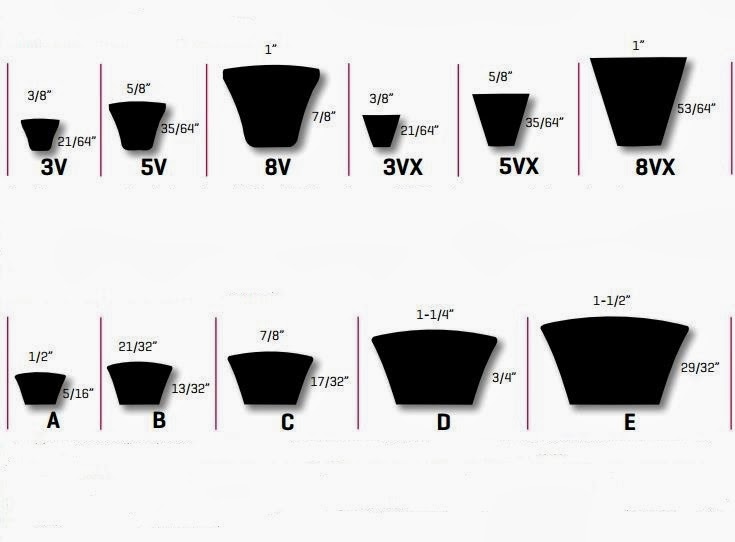V Belt 101 – Create A Part Number
Your operation is humming along smoothly. All of a sudden you’re drive quits turning. On inspection, you see that the V Belt is broke and there is zero information on the belt. You dig out the parts manual and it gives you a part number that makes zero sense to your power transmission supplier. You’re coming up with a bunch of zeros. The following description will give you the info you need to come up with the industry standard part number for your failed V Belt.
Cross Section
First you need to determine the cross section of the belt. The width is the easiest to get and to narrow down the style of the belt. Measure across the the top of the belt with a ruler. If the edges are worn beyond your comfort level for accuracy, get the height of the belt with your ruler. Compare your measurements to the image below to determine the series of belt.
 Length
Length
Mark the topside of the belt. Using your tape measure, measure around the belt back to the mark you made on the topside of the belt. Remember that measurement.
Creating your Part Number
If the belt being replaced is either 3V, 5V or 8V, you start with the series number, add the length and a zero on the end. Here’s an example: you have a 3V cross section and a length of 75 inches. Your part number for that belt is 3V750. Simple right?
Now it becomes a little more complicated for the A, B, C, D and E Belts. These belt lengths are actually the inside diameter. That inside diameter length is easily calculated by subtracting a pre-determined factor for each series.
- A Series minus 2
- B Series minus 3
- C Series minus 4
- D Series minus 5
- E Series minus 7
Here’s an example: you have a A series cross section and an outside length of 75 inches. Your part number is A73 (75-2). A little more complicated, but still simple!
Cogged and Banded Belts
If the belt has notches on the inside diameter of the belt, add an X after the series and before the length. Our examples above if the belts had notches on the inside diameter: 3VX750 and AX73.
If your belt has multiple belts banded together to form a single belt, count the bands and put the number of bands in front if the belt number followed by /. Example: 4/A73 is a 4 banded belt.
If you have more questions, call us, 260-426-4673.

